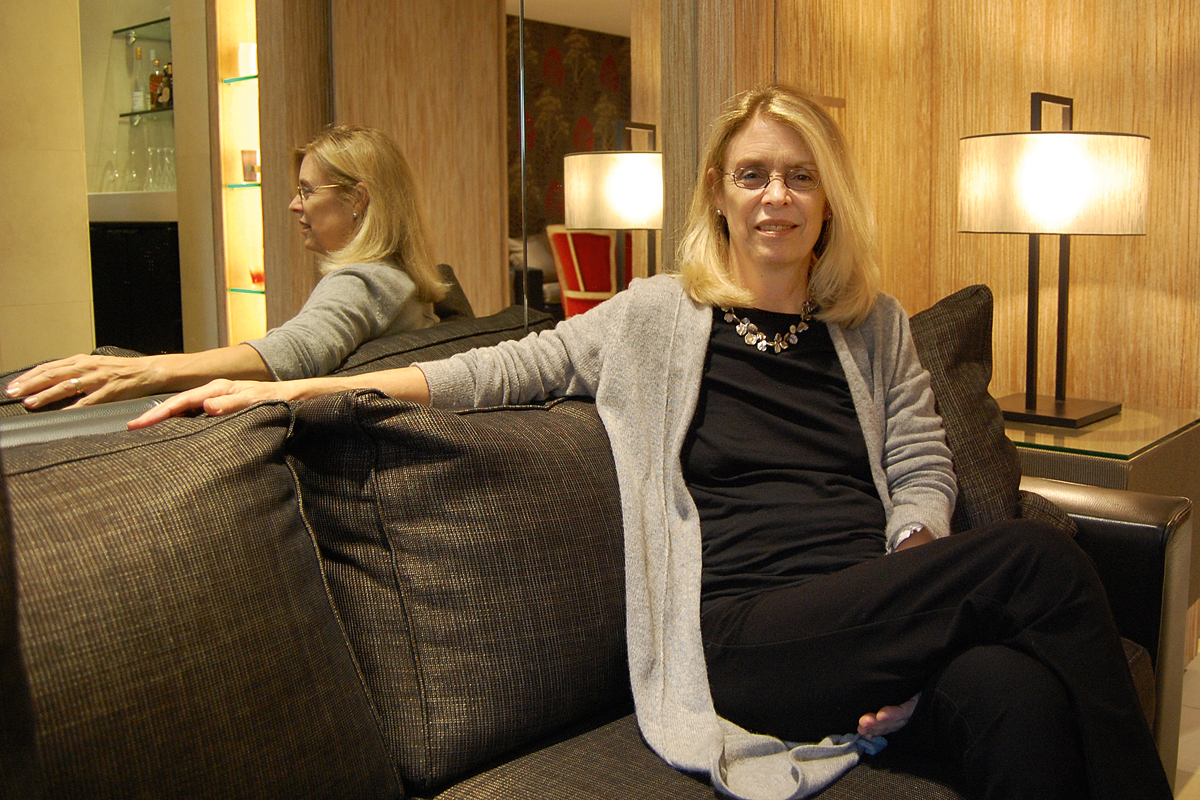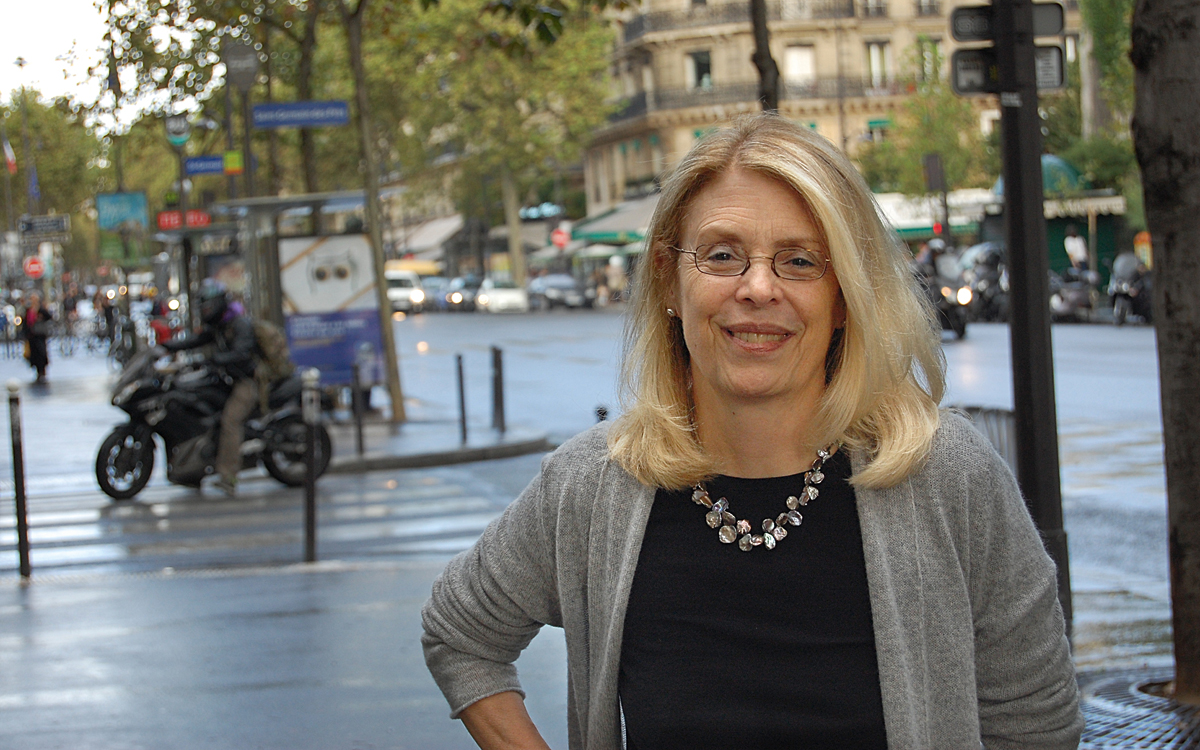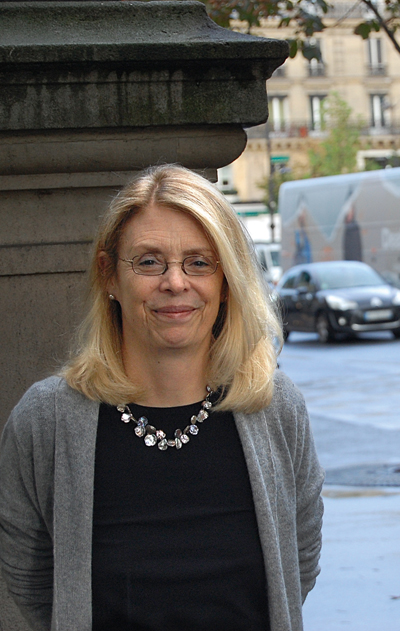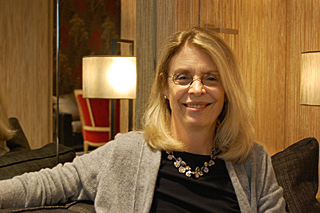Interview with Londa Schiebinger
«There is an unconscious gender bias in the Google algorithm»
Professor of History of Science of Stanford University and director of Gendered Innovations

We meet Londa Schiebinger in Paris after her participation in the 9th European Conference on Gender Equality in Higher Education, organised by the French National Centre for Scientific Research. Since 2011, this researcher and professor of History of Science of Stanford University (California, United States) is an advisor to the European Commission in gender issues, through the Gendered Innovations programme. We talked to Londa Schiebinger, director of this broad project – in 2015 there were more than 600 participants from forty countries –, about gendered scientific, medical, engineering, and environmental studies, but also about the evolution in the participation of women in science, or how a lack of gender perspectives can harm scientific research.
Despite being a prominent figure in the field – she has received prestigious awards such as the Humboldt Research Award or the John Simon Guggenheim Foundation fellowship, and has lectured twice in the United Nations –, Londa Schiebinger received me at her hotel in the bourgeois district of Saint-Germain-de-Près in Paris, with a smile and a hug, a very North American greeting.
Since the first question, I can appreciate her teaching skills. Although the issues we address are quite delicate in terms of language, Londa Schiebinger is natural and straightforward, answering each question in an educational matter, inviting me to reflect, turning a topic that might at first seem abstract, a specific field with many practical applications for our daily life.
Let’s talk a little bit about your project, Gendered Innovations. Why was it created?
I was very, very interested to know how we could use gender analysis for discovery and innovation in science and technology. Before this we had always been talking about gender bias. But I found that it was really important to turn around to bring in the scientists and the engineers because they are interested in what new things they can see, so this is a way, using gender, to see new things. And that was why we were interested in doing it.
Which participants are there in the project?
I started it in 2005 at Stanford University and then the European Union asked me to participate with them, at 2011. So the idea started in 2005, the project really started in 2009 and the EU joins in 2011. The project works across Europe, the United States, Canada, and now South Korea has joined. We have six, I think, basic co-directors and then we have the collaboration of over eighty scientists and engineers from all fields to do the very specific case studies that we develop, methods and key studies, of how you integrate, here are the important words, how you integrate sex and gender analysis into research.
«The methods of sex and gender analysis are not in the university curriculum, yet it is very important»
Could you tell me about these studies?
We were interested, because the methods of sex and gender analysis are not in the university curriculum, yet it is very important. The first thing our group did was to develop those methods and we present twelve methods on the website. We knew it would be very important to create case studies or concrete examples where sex and gender analysis added something new to the research. One of my favorite examples is machine translation. If you look at Google Translate, which is the main one in the United States – SYSTRAN is the main one in Europe – we found that it defaults the masculine pronoun. So does SYSTRAN. If I put an article about myself into Google Translate, it defaults to «he said» instead of «she said». So, in an article of one of my visits to Spain, it defaults to «he thinks, he says…» and, occasionally, «it wrote». We wondered why this happened and we found out, because Google Translate works on an algorithm, the problem is that «he said» appears on the web four times more than «she said», so the machine gets it right if it chooses «he said». Because the algorithm is just set up for that. But, anyway, we found that there was a huge change in English language from 1968 to the current time, and the proportion of «he said» and «she said» changed from 4-to-1 to 2-to-1. But, still, the translation does not take this into account. So we went to Google and we said «Hey, what is going on?» and they said «Oh, wow, we didn’t know, we had no idea!». So what we recognized is that there is an unconscious gender bias in the Google algorithm. They did not intend to do this at all, so now there are a lot of people who are trying to fix it.

How can you fix that?
Oh, well, this is the thing! This is the discovery part. If we can fix it, this is a huge advancement. I think algorithms in general are a problem because if there is any kind of unconscious bias in the data, the algorithm just returns that to you. So even though Google has policies, company policies, to support gender equality, they had an unconscious bias in their product and they do not mean to. Now that they know about it, they can try to fix it. And there is actually a conference in Harvard in November where, again, the computer scientists will see how to insert some kind of social responsibility into the algorithm. But algorithms are popular because there are mathematically rigorous ways to do things with no human input, it is just machine learning. So, if you intervene in that, how do you do it properly? It is a huge opportunity for discovery, because we find more and more examples of this kind of unconscious gender biases in algorithms. For each of these twenty-some examples, we have a workshop for each one, where we brought the experts from computer science along gender experts to really work out what the problem was and how to fix it. The fix is still coming in this case. But we have lots of good examples like heart diseases in women, osteoporosis in men… People realize that, if you look at men and women both, you can help more people. And this is what we are trying to do: to help more people. You find this all the time. For heart disease, it is just the opposite: we were looking only at heart disease in men and then you missed that heart attack is the number one killer of women, so you missed all of that information. Now, we realize that, and this, again, is the innovation. Helping more people by focusing on both men and women.
«Not all proposals, like theoretical physics or pure mathematics, are susceptible of sex and gender analysis»
What kind of work do you do for the European Commission?
Our project was important in setting the new policy for Horizon 2020, where researchers work on specific topics, which the European Union has decided might be a good place to look at sex and gender. We work with them as they were setting this policy, we gave some of the evidence, the background, and the scientific platform for this new policy. The European Union does many calls for proposals and they went through all of them, and they decided where it might be important to have sex and gender analysis and they checked those. Not all proposals, like theoretical physics or pure mathematics, I do not think you can look for sex and gender analysis there. It is for fields like robotics, environmental studies, health and medicine, the places where sex and gender analysis will have an impact, so that is why they implemented a new policy. For example, public transportation, under environment, is about making transportation systems work for everybody.
Is there really a difference in the use of public transport by men or women?
This is not about woman and man, it is about the type of labor. This case study talks about how data is collected for public transportation. Usually governments and civil engineers collect [data] in the categories for travel: employment, education, doing shopping, leisure… There are eight traditional categories but none of those categories include «caring work» and caring work, whether you are taking your children to daycare or taking a friend or an elderly parent to a doctor, it is a different pattern of transport. So, if you are traveling for work, you usually travel from home to work and back, but if you are doing caring work you go from home to the daycare, then to work, and then you probably go to grocery store and maybe you go to the dry cleaners, you better go pick up the children and then you go home, so you have different patterns of travel. And the point is to make the public transportation fit all of those patterns. That is the idea. And it does not matter if it is a man or a woman who is doing this caring work, but it is for the type of work. And, of course, women traditionally have done the caring work. But young men are really doing it now! The transportation system needs to change, too.

You have worked as well in the field of biology research and you have defended that it is very important to take into account the sex of the cells. Why did they not do that?
People just did not think about it. You should not think about the cost because doing work on cells is the very first step and it is very cheap, compared to the whole process. If you are using cells to develop a drug, which can cost millions of dollars to develop, this is just the first step. If you get the first step wrong, you have wasted millions of dollars. It is very important to start off right. So, you can know the sex of the cells, ignorance is not an excuse. And it could be important so you should take that into consideration.
Some people assimilate sex and gender as if they were the same thing, or they associate a specific sex to a gender. Has this affected research?
Sex is a biological phenomenon and gender is a cultural phenomenon, so behaviors, attitudes, values, the way you understand how men, women and gender-diverse people function in society. Men and women’s behaviors are converging now and you have so much more freedom for transgender and gay people, it is a new wonderful world. We do not have to fit in our boxes anymore. These two things are separate, and people used to think that gender just came from the biology, so you could not change it, but if you realize that the culture also creates these attitudes of what men and women can do, then you can change it. Through a political process you can change it, you can give equality to men and women and transgender people. In the United States we have this giant discussion about bathrooms now. If you are transgender, which bathroom should you choose? The one for your sex or the one for your gender? We have so much more freedom. Now, a lot of countries are asking for 40% women on company boards, Angela Merkel is Chancellor of Germany, we wondering – we hope – if Hillary Clinton will be President of the United States. There is just more freedom for everybody, and men have more freedom now not to just be working and supporting families, but to take part in family life. There is just much more freedom, I think.
Is the quota system helping?
We do not have quotas in the United States, so I do not know how it works in Europe. In the United States we have Affirmative Action and I think that is very important. It means that if two people apply, a man and a woman, and they are equally qualified, you would give the position to the person who has been historically discriminated against. For example, a man and a woman equally qualified for a position in nursing: you would choose the man because men are only, I do not know, 10% of nurses and you would try to balance things. That is Affirmative Action.
«Sex is a biological phenomenon and gender is a cultural phenomenon, behaviors, attitudes, values»
And coming back to the question before, if people assimilate that for a sex there has to be a specific gender, do you think this reinforces stereotypes?
If you think that sex and gender are the same thing, it reinforces stereotypes. Because you just think that because women have estrogen, they will act in a certain way. But we know that is not true. Obviously, women still give birth, that is something that men cannot do biologically, so you do have an asymmetry. You do have a difference in the biology but you can easily make social policies which support the birthing of babies since society needs to reproduce itself and you can also make it possible for women to be professionals and to work at the highest level. I have two children, this never stopped me, because in academia there are many more supports for having a family, work and life balance. It is very important to work for equality for people even if they have biological differences.
«It is very important to work for equality for people even if they have biological differences»
Are the stereotypes an enemy to beat?
We have to have stereotypes, there is a positive meaning to stereotypes. When I walk down the street I need to know what to expect from everybody. If someone is drunk and crazy, I have a stereotype, and I know to stay way, because it can be dangerous. I stereotype you by what you wear, I stereotype you by your social class, by how you speak. I stereotype you because I understand, I have all these ways of understanding, how you fit into society and then I know how to speak to you, I know how to interact with you. There are some positive stereotypes but there are also negative stereotypes: if you are a man and you know that I am a woman, you may just dismiss my opinion because I am a woman. So we need to rethink our stereotypes. You have to have this gestalt, these ideas when you meet someone. Are you a safe person? If I go down on the street, I cannot interview each person as I go by, I have to make a judgement about them, and these judgements are these unconscious stereotypes. In some instances, we need to change them, and in some instances we do not. If there is a scary dog, I will keep my stereotype that tells me «just stay away». We have to keep some of our categories, and some categories we have to re-think.
Let’s talk about the relation between women and science. You have studied that and you have seen that in the seventeenth century women were participating in research and then, gradually, they participated less and less. What is the situation nowadays?
The situation is much better, yes!
But what are the challenges?
Sure, there are still challenges. I think Stanford University only has 25% women full professors, so we are not equal as for professors. But if you take my discipline, history, when I was hired at Stanford University, we had 18% women full professors in the History Department and now, I think, we are up to maybe 40% women because many women get their PhD, so I think we are really moving forward. There are still fields, like electrical engineering, where girls are not choosing to go into it. So we have to look into the culture and say «Why do American girls not want to be electrical engineers?» If you think of our Barbie doll, in 1994, you pulled the cord and the doll spoke, and she said «Math class is tough», and all these girls who loved Barbie learned, that girls do not like mathematics. So I think we really need to change our culture, we need Hollywood and big movies to portrait women as mathematicians or computer scientists and as intelligent, as leaders… and you are getting more of that. Throughout the whole society we need to build the impression that women can do things and men can do other things, that men can be caring and good fathers and nurses and school teachers: all the things that men are not allowed to do because of the social norms, because of your attitudes.
It is noticeable that there are still fewer women in stem fields… What are the causes of that? We have been talking about behavior, culture and education, but do you think that the glass ceiling is affecting this as well? What should we do to break the ceiling?
I think the glass ceiling is being broken every day, I think it is a great opportunity now to be a young girl. But we need to be vigilant, because we still need political pressure and changes and knowledge.

The situation of women at work and science has changed because of the fight and evolution of civil rights, but we have seen that there has even been an evolution of the concept of feminism in the last decades. In the 1980s, we linked feminism to the concept of sameness, which, from my point of view, could legitimate a patriarchal approach to society, defending that women and men are equal but not regarding the differences between them and the good things that both genders can give. Now, with your studies, we can see that you take those differences into account while you seek equality. Which are the benefits of this new approach to science and knowledge?
Yes, we had the sameness, you had to be the same to be equal, and then we had this different feminism which emphasized that there are feminine qualities that are helpful to societies. We do not want just to squash them and eliminate them. More things are valued. Let me go back again to the discipline of history. Because as women came in to be professors, the whole discipline changed, a historical question changed. When the men where professors before the women came in, history was politics and presidents, diplomacy and war. These were the topics that were valued, maybe some intellectual history, the history philosophy… But when women came in, we had a whole revolution in thought, and now we have the history of family, the history of women, the history of birthing, gay history and lesbian history… We have history of all kinds of things which never before counted as history. Now, those topics are considered part of the core discipline.
«When the men where professors before the women came in, history was politics and presidents, diplomacy and war»
Are there other examples?
It happened in medicine as well. First, you studied all these topics in the male body, and then, in the 1980s, 1990s, and specially now, you are beginning to look at sex differences in medicine, how does this work in the female body? Because the biology is different. What is the mechanism? What is the metabolism? How does it work? You find a broadening, an enrichment of medicine, it is a new science and I think this is why it is important that you recognize difference, you value them equally, and you incorporate them into science and society. I think that now we know more things, I think we opened up the door, it really is about knowledge making.





